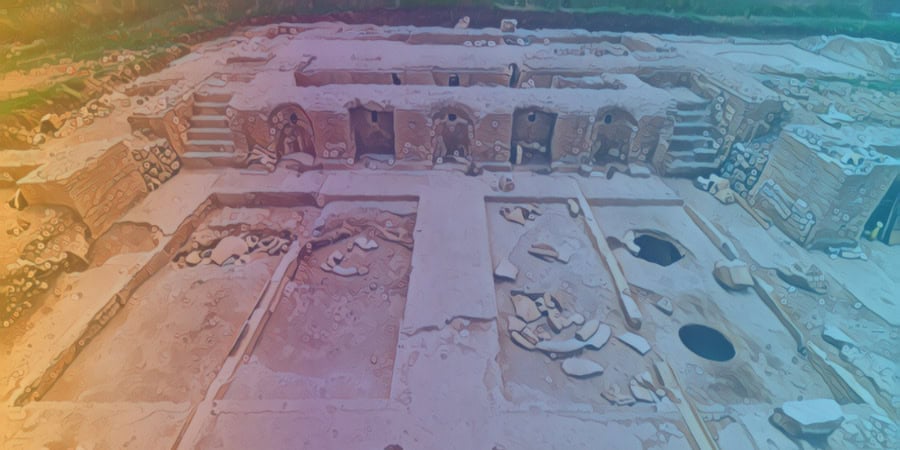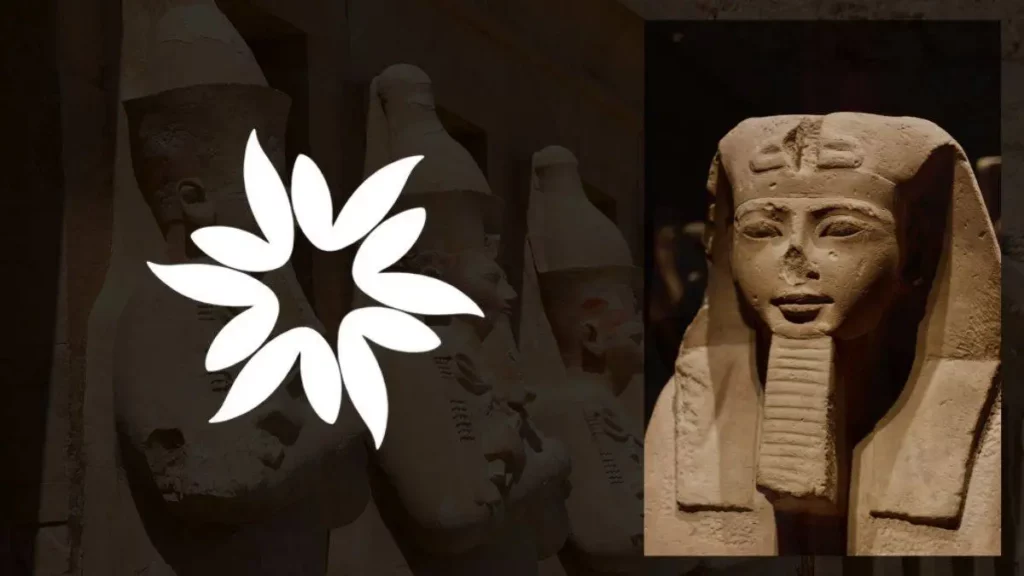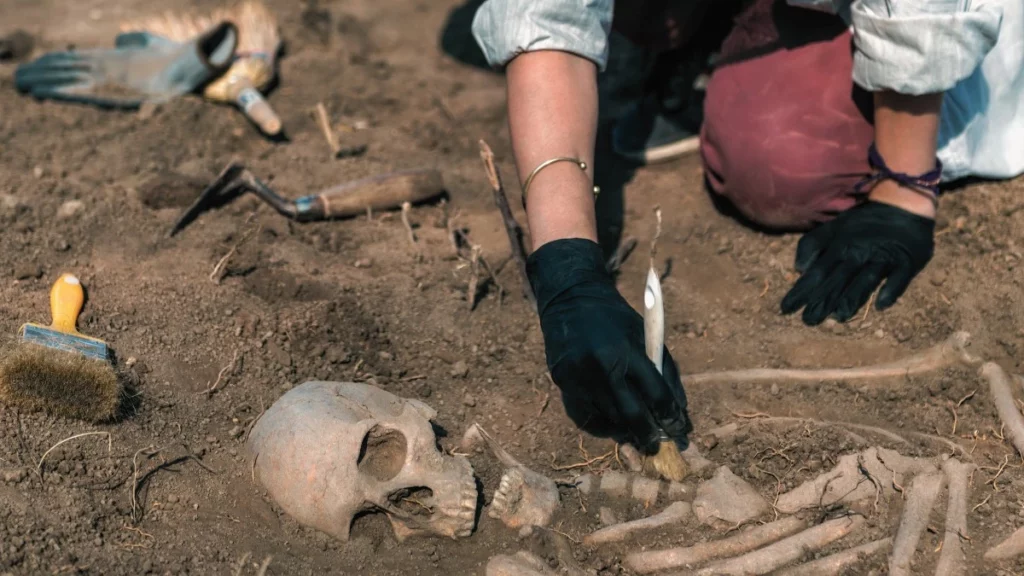Key Takeaways
- The recently unearthed 1,800-year-old winery at the Villa of the Quintilii outside Rome was designed not only for practical wine-making but also as a theatrical display for elite guests.
- The winery features lavish and elaborate decorations, including marble floors, highlighting the ancient ruling class's romanticization of agricultural labor as a symbol of their wealth and status.
- The winery's opulent features and production process, such as grape treading area, two presses, and vat, were typical of ancient Roman wine production, but the decoration and arrangement of these features were almost unparalleled in the ancient world.
- The surrounding rooms of the wine cellar, likely serving as dining spaces for observing guests, were elaborately decorated, and wide entrances offered extensive views of the winery's interior, emphasizing the theatrical nature of the winery.
- The Villa of the Quintilii winery exemplifies how the ancient Roman elite combined utilitarian function with ostentatious luxury to craft their social and political status, and it offers valuable insights into the emperor's annual routine, suggesting that the imperial court may have regularly visited the Villa of the Quintilii for the annual vintage.
Archaeologists have unearthed a magnificent 1,800-year-old winery at the Villa of the Quintilii outside Rome.
The opulent winery appears to have been constructed not only for practical wine-making but also as a theatrical display for elite guests.
Lavishly decorated rooms encircling the winery likely hosted spectators who observed the wine-making process, with extravagant elements like marble floors prioritizing aesthetics over functionality.
Emlyn Dodd, a researcher at the University of London’s Institute of Classical Studies, suggests that this highlights the ancient ruling class’s romanticization of agricultural labor as a symbol of their wealth and status.
Theatrical Winery Features and Production Process
The winery boasts typical Roman features, such as a grape treading area, two presses, a vat for collecting and settling grape must, and a system of channels linking these elements to a wine cellar with sunken storage jars.
The decoration and arrangement of these features, however, are almost unparalleled in the Roman and ancient worlds.
The production process began in the treading area, which was partially adorned with red breccia marble—an impractical choice for hydraulic workspaces, emphasizing the extreme luxury of the winery.
The large-scale mechanical presses employed one of two lever-and-screw mechanisms common in Roman Italy.
The carefully controlled collection and settling vat system created a striking fountain effect as the grape must flowed through the niches.
Opulent Cella Vinaria and Dining Rooms for Guests
The wine cellar, or cella vinaria, sits at the heart of the winery, with surrounding rooms focusing on this central space.
A cross-shaped walkway paved with red breccia marble divides the sunken storage jars, or dolia defossa, into four sets of two, where fermentation and aging would take place.
Adjacent to the cella vinaria are elaborately decorated rooms, likely serving as dining spaces for observing guests.
Wide entrances offered extensive views of the winery’s interior and granted spectators glimpses of nearly every stage of the production process.
The Villa of the Quintilii winery may be connected to a vintage ritual, similar to the one celebrated at Villa Magna, possibly relocated closer to Rome.

The Villa of the Quintilii Winery’s Impact on Ancient Roman Elite Culture
This rare example of an extravagant wine production complex from the mid-third century AD demonstrates how ancient elites combined utilitarian function with ostentatious luxury to craft their social and political status.
The theatrical nature of the winery highlights the ancient Roman elite’s priorities, who sought to display the production process as a lavish performance.
Comparisons with the grand winery at Villa Magna raise intriguing questions about the relationship between production scale, storage capacity, and the potential transfer of dolia (large storage containers) between the two villas.
The Villa of the Quintilii winery may be connected to a vintage ritual, similar to the one celebrated at Villa Magna, possibly relocated closer to Rome.
The winery exemplifies how the imperial household engaged with the agricultural world, using visual spectacle and romanticized agricultural performance to build their self-image within Roman culture and society.
The complex offers valuable insights into the emperor’s annual routine, suggesting that the imperial court may have regularly visited the Villa of the Quintilii for the annual vintage.
In conclusion, the Villa of the Quintilii winery presents a unique perspective on the relationship between social power, agricultural wealth, and the ancient world, prompting further exploration of the role of theatrical agricultural performance in other imperial cultures.








